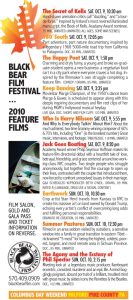At Bailey Design we help you fit your nonprofit’s OR for-profit existing resources and advantages to the appropriate type of event with our 12 years of experience. If, for example, you’ve got a large physical facility, think about events that might attract a crowd. If you’ve got an unusually large volunteer corps, consider events that require large numbers of people to prepare or run, such as an auction, fair, festival, or home tour. If you’ve got access to celebrities or experts, consider lectures, benefit concerts, or major donor parties. If you’ve got Web-savvy people, ask them to help out with an online auction or other virtual event. Then, we’ll consider whether the event is a good match for your mission and fits the interests of your potential ticket-buying audience.
Call today to speak with us about your event. Together let’s make it happen!
EVENT PLANNING 101 TIPS
Choose an Attractive and Affordable Venue
Finding a location that’s pleasant to spend time in, convenient to your guests, offers the services and amenities you need, and fits within your budget is key to the success of any event. With any luck, you’ll find a location that you can return to year after year.
When you’ve found the perfect spot, be sure to sign a contract covering the details.
Choose Add-Ons to the Main Event
Within the bounds of good taste, find every possible way to get your guests to open their wallets after they arrive. A silent auction combined with a dinner is the classic example.
Consider Giving Out Awards
Did you ever think about why so many groups give out things like “Community Achievement,” “Outstanding Citizen,” or “Good Neighbor” awards? It’s a way to emphasize community values and honor others, sure. But it’s also a great way to boost attendance at your fundraiser. The awardees will attend. Their families will attend — some of them with free tickets, but you can set a limit on these — and some of their friends will also pay to attend.
Make a Separate Pitch for Support During the Event
Let’s say your youth jazz band gives a benefit performance, and some audience members bring friends. Those friends probably weren’t told anything more than, “Pick you up at 7:30.” They have no idea that your group is providing important music instruction to replace the lack of it in the public schools, giving students something constructive to do after school. Even your existing members may be a little vague on the details.
One way to counter this is to have your organization’s most dynamic personality take the stage at intermission and tell people about the great work you’re doing and how they can help continue and expand it.
Keep It Green: Pay Attention to Environmental Issues
Attention to environmental goals when planning and implementing an event can boost attendance, audience excitement and participation, and media attention.
Develop a Realistic Budget
There’s no great mystery to creating a special-events budget: You list all your anticipated expenses in one column, enumerate what you expect to bring in from various intended activities, and finally subtract your expected expenses from your anticipated revenues to give you a total.
The trick, of course, is accurately projecting your expenses and income. Part of this involves taking your analysis to a micro level, so that you don’t forget to budget for items like paper napkins, ice buckets, and microphone rentals. Another critical factor is how faithfully your volunteers follow through on certain activities, for example in getting donated food and chairs.
Plan and Pace Event Activities
The success of your event depends in large part on what goes on behind the scenes in the months or weeks leading up to it. First, you’ll need to pick a date — ideally one that won’t conflict with major holidays or even popular local events.
Allow plenty of lead time. The “classic” special event, such as an annual dinner, gala ball, golf tournament, or benefit concert, normally takes between six months to a year to prepare.
Get a head start on corporate sponsorships, which are crucial for most events’ profitability. Most companies make their sponsorship decisions in either the last quarter of the preceding year or the first quarter of the year when the event will be held.
To figure out what needs to be done and by when to work backward from the day of the event. What are the final steps–such as picking up rental chairs and flowers? By when do these need to be ordered? By when do decisions need to be made about how many chairs and what type of flowers? Who will be responsible for the decisions? You get the drift.
Define Committees and Assign Leaders
Every special event needs a central point person to coordinate volunteers and keep things moving on schedule. But one person can’t pull off an event alone. Identify all the activities that need attending to, then create subject committees to match them.
Plan for Promotion and Publicity
Promotion is advertising that you arrange or pay for yourself, such as posters and invitations. Your newsletter, website, and Facebook page should start generating excitement weeks or even months in advance.
Publicity is media reporting. You’ll need to send out press releases, ideally with photos, and get in touch with your favorite press contacts.
Deal With Risks and Liability Issues
Consider any minor or major disasters that might befall your event — such as a child’s getting injured, a donor drinking too much and causing an accident driving home, or a thief’s taking your cash box. To forestall mishaps and disasters, take the following steps.
- Make sure you’ve complied with all applicable laws and permit requirements.
- Put your own sensible safety measures into place.
- Consider buying special insurance for the event.
Attend to Last-Minute Tasks
The days and hours leading up to the event are usually whirling-dervish time for even the most organized events planner or leader. Create checklists, review them frequently and carefully, and double-check that all committee leaders are communicating with one another as needed.
If you’re having a sit-down lunch or dinner event, take your final list of ticket buyers and create a seating chart of who will sit with whom.
OR-Call today to speak with us about your event. Together let’s make it happen!
Check out some of the events we are proud to be a part of—







